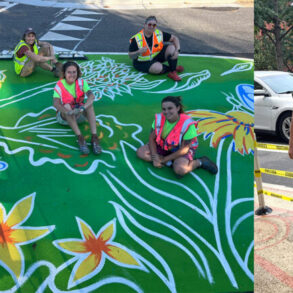By Dr. Roman Kraussl, Professor of Finance at Bayes Business School, City St George’s, University of London.
The idea of using spare cash to dabble in the art market dates back at least to the Renaissance. Assorted Medicis and Borgias were, of course, primarily hoping to burnish their reputation and atone for other questionable market activities – such as buying the papacy.
However, for much of the last 30 years, art – once largely the pastime of connoisseurs – has been widely seen as a genuine financial investment. Fuelled by a strong rise in global wealth and the search for yield, art has appealed to many alternative asset investors. Additionally, from the early 1990s the UK art market had been jolted out of its genteel reverie with the arrival of the YBAs (young British artists), followed by a gallery-full of Russian oligarchs.
As part of my work analysing alternative investments, I have developed quantitative investment tools that can evaluate whether art as an asset class can genuinely rival standard assets such as equities, bonds, real estate, hedge funds, private equity and gold.
Finance 101 would tell us to consider returns, but this is difficult with unique products like art. There are no daily closing and opening prices to consult. Transactions involving the same artist are infrequent, and for specific artworks the average turnover term is more than 30 years.
To overcome these issues, I build hedonic price indexes. These measure the price appreciation of artworks over time while considering such characteristics as the size, medium and provenance of an artwork – together with the reputation of the artist. They incorporate all auction records – not just a limited sample of repeat sales. They can also be refined to cover submarkets such as Old Masters or photography.
I have assessed a range of investment related questions, including:
- What are the risk and return characteristics of art as an investment?
- How much art should a well-diversified portfolio include?
- Is art a good hedge in turbulent times?
- How does one artist compare with another in the same genre?
The indexes provide important insights for high net worth individuals, wealth management and pension funds and they assist in valuation, wealth securitisation and portfolio optimisation.
My overarching research-based conclusion is that art investments provide a lower – but still positive – average risk-adjusted return than the broad financial markets. That means art can help investors to diversity their investment portfolio. It’s a useful hedge against financial market risk.
For those FT readers thinking of sticking a toe in this particular market (it is bonus season after all ), I would nonetheless counsel caution. After taking into account transaction costs and fees, my research shows that art is unlikely to produce real returns for a passive investor, unless they pick a portfolio of “winners”.
Additionally, the art market is opaque, illiquid and unregulated. I therefore conclude all my art-finance presentations and seminars with the same simple piece of advice that I would give to a dinner party guest: “Buy what you like!” After all, they may have to live with it for the rest of their life.
Yet, as noted above, art can be a sound financial investment.
As with every (alternative) investment, knowledge matters. So does independent research, unbiased data and quantitative skills.
This includes detecting art market trends. Investors should evaluate an artist’s market strength, their liquidity and the (future) movement of both the artist and the genre.
My research has also delivered other insights. Using a sample of 1.9 million auction transactions from 1970 to 2016 in 49 countries for nearly 70,000 artists, I found that auction prices for paintings by female artists are significantly lower than those for works by men. This gender discount is generally higher in countries with greater gender inequality.
We have also considered whether artificial intelligence has a place in such a fickle and quirky environment as the secondary art market. We used machine learning and AI to create an algorithm that mimics the work of human appraisers by generating price predictions for art at auction.
Perhaps unsurprisingly, the human experts’ predications won out. But our goal was not to pit human against machine on this specific task. We wanted to assess the usefulness and potential applications of machine-based valuations. While AI is not likely to replace humans just yet, it may provide investors and intermediaries with a wealth of information quickly and cheaply.
Overall, it’s likely interest in art as an asset class will continue to increase. Higher disposable income and greater levels of wealth have created a new demand for art – for pleasure’s sake and as an investment. Persistent market inefficiencies present opportunities for excess returns.
After all, buying the papacy is so 15th Century.
This post was originally published on this site be sure to check out more of their content







